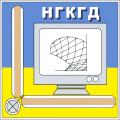Студентська допомога в захист Вітчизни
Про Олега Качуровського з Вінниччини, син якого є військовим хірургом, написано вже немало - взятися за виготовлення мобільного шпиталю для сина в кустарних умовах, зможе тільки Він.
За словами О.Качуровського є і допомога від студентів факультету конструювання та дизайну НУБіП України. Як один із прикладів, Олегу Качуровському необхідно було оперативно накреслити складальний кресленик черв'ячного редуктора для лебідки, яка підійматиме стіни мобільного шпиталю. На допомогу прийшов Євгеній Бриндак, студент ГМаш-1702, який разом з О.Качуровським в гурт. №5 виконали цю роботу. Дякуємо їм за маленький вклад в захист Вітчизни.
Також відмітимо, що Є. Бриндак є членом гуртка "Комп’ютерна графіка та твердотільне моделювання" і чемпіоном України по спортивному орієнтуванню.
Спорт і навчання єдині. Так тримати.
